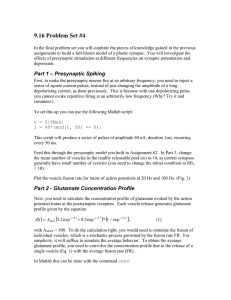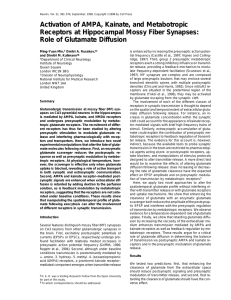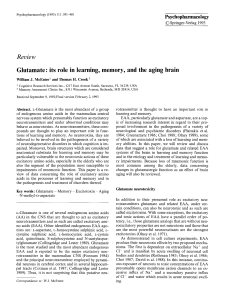9.16 – Electrophysiology R A AR
advertisement
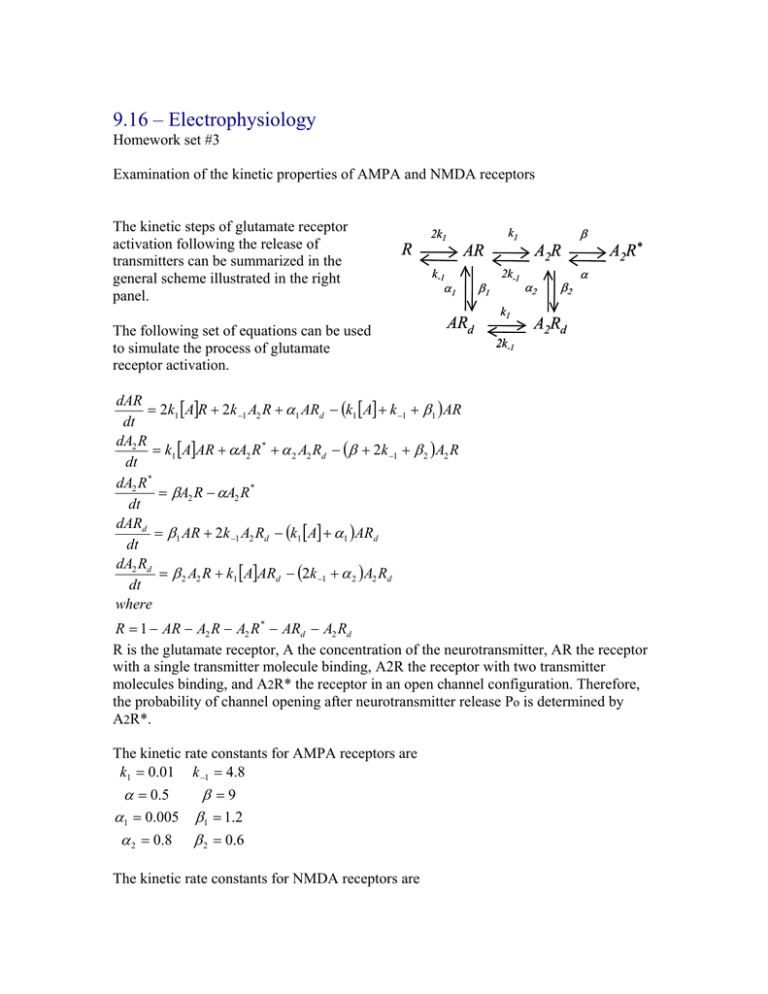
9.16 – Electrophysiology Homework set #3 Examination of the kinetic properties of AMPA and NMDA receptors The kinetic steps of glutamate receptor activation following the release of transmitters can be summarized in the general scheme illustrated in the right panel. R The following set of equations can be used to simulate the process of glutamate receptor activation. 2k1 AR k-1 α1 ARd β1 k1 2k-1 k1 2k-1 A2R α2 β2 β A2R* α A2Rd dAR = 2k1 [A]R + 2k −1 A2 R + α1 ARd − (k1 [A] + k −1 + β1 )AR dt dA2 R = k1 [A]AR + αA2 R * + α 2 A2 Rd − (β + 2k −1 + β 2 )A2 R dt dA2 R * = βA2 R − αA2 R * dt dARd = β1 AR + 2k −1 A2 Rd − (k1 [A] + α1 )ARd dt dA2 Rd = β 2 A2 R + k1 [A]ARd − (2k −1 + α 2 )A2 Rd dt where R = 1 − AR − A2 R − A2 R * − ARd − A2 Rd R is the glutamate receptor, A the concentration of the neurotransmitter, AR the receptor with a single transmitter molecule binding, A2R the receptor with two transmitter molecules binding, and A2R* the receptor in an open channel configuration. Therefore, the probability of channel opening after neurotransmitter release Po is determined by A2R*. The kinetic rate constants for AMPA receptors are k1 = 0.01 k −1 = 4.8 α = 0.5 β =9 α1 = 0.005 β1 = 1.2 α 2 = 0.8 β 2 = 0.6 The kinetic rate constants for NMDA receptors are k1 = 0.002 α = 0.16 α1 = 0.005 k −1 = 0.008 β = 0.009 β1 = 0.0035 α 2 = 0.005 β 2 = 0.0035 The concentration of glutamate in the synaptic cleft can be imitated by A(t ) = AMAX (3.2 exp −t / 0.1 + 0.5 exp −t / 2.1 )* (1 − exp −t / 0.2 ) where Amax is the peak concentration of transmitters. During the process of synaptic transmission, Amax can vary from 100 µM up to 3000 µM. A. Solve the above equations numerically using MATLAB and answer the following questions. 1. What determines the decay phase of an EPSC, the profile of glutamate concentration or intrinsic properties of the channel? Does the decay phase of AMPA or NMDA receptor activation depend upon the glutamate concentration? 2. Describe the behavior of AMPA vs NMDA receptors under repetitive activation. Can one increase AMPA receptor activation by repetitive release of transmitter? What about NMDA receptors?
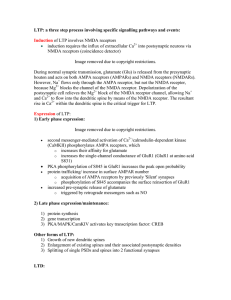
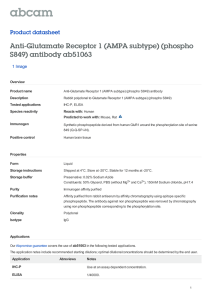
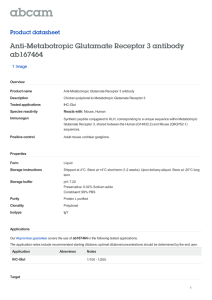



![Anti-Ionotropic Glutamate receptor 4 antibody [EPR2511(2)] ab119995](http://s2.studylib.net/store/data/012689459_1-427bd5f5d8d9b1e54085ad36060c9392-300x300.png)

